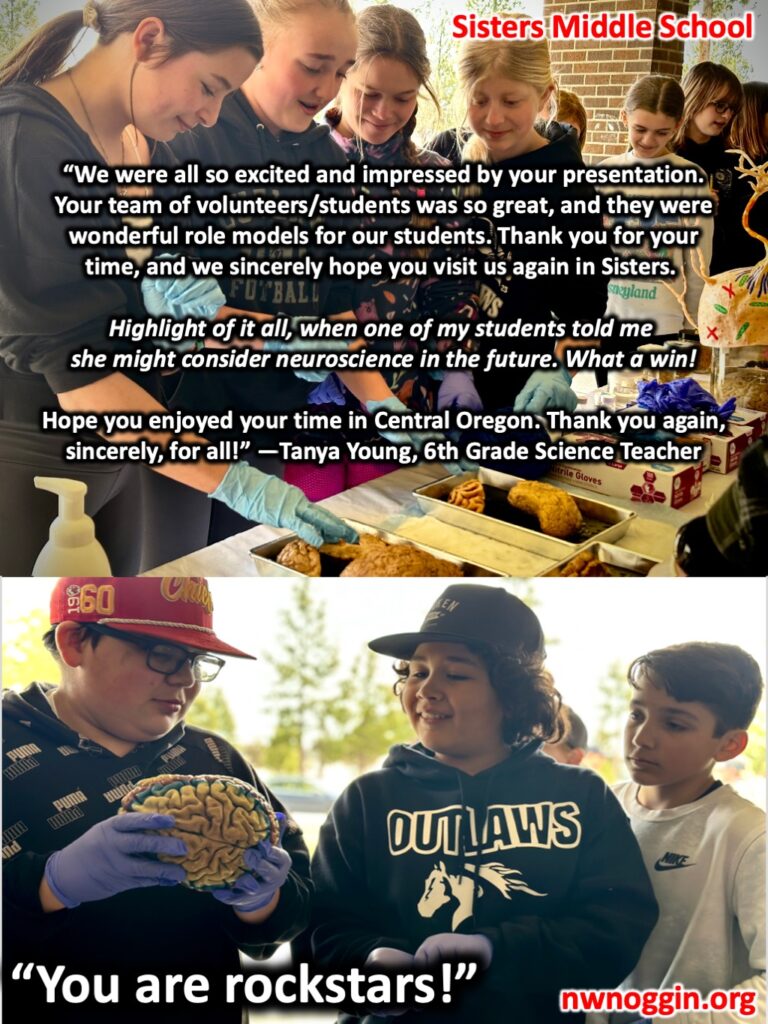
LEARN MORE: NW Noggin Brings Neuroscience Fun to Sisters Students
“Forged out of
— Beth Wood, excerpt from The Ropes
electricity, born ready to run,
drunk on the promise of new
grass, young evening sun, never
quite solving the mystery of
where the ropes come from.”
We left the drenched Willamette Valley in springtime, carting brains over the snowy Cascade mountains and down into the pine-scented central Oregon community of Sisters!

We had welcome support from the Sisters-based Roundhouse Foundation and from the Psychology department at Portland State University to bring undergraduates together with 6th graders at Sisters Middle School. Together we explored the electric field of neuroscience, crafted new current-carrying neurons from pipe cleaners and considered deep questions about our malleable, changing brains.

Kadi Rae Smith created two colorful and compelling BRAIN CELL HATS using 18 gauge stainless steel wire for the dendrites, along with some paper and papier-mâché. The hats were eagerly worn by fellow PSU volunteers Regina Warila, Conner Corbett and Annik Hokanson, as well as by veteran Northwest Noggineer Angela Hendrix.
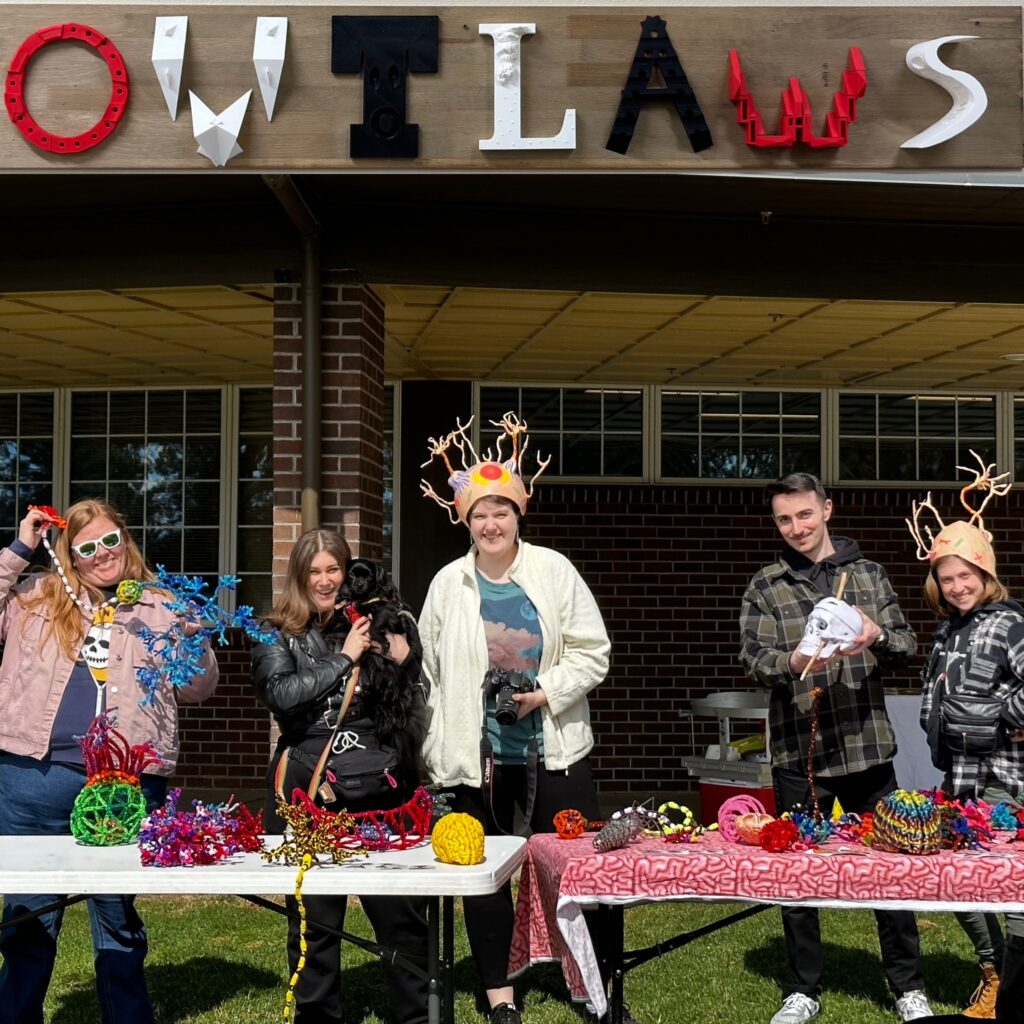
The hats were a hit with 6th graders too!
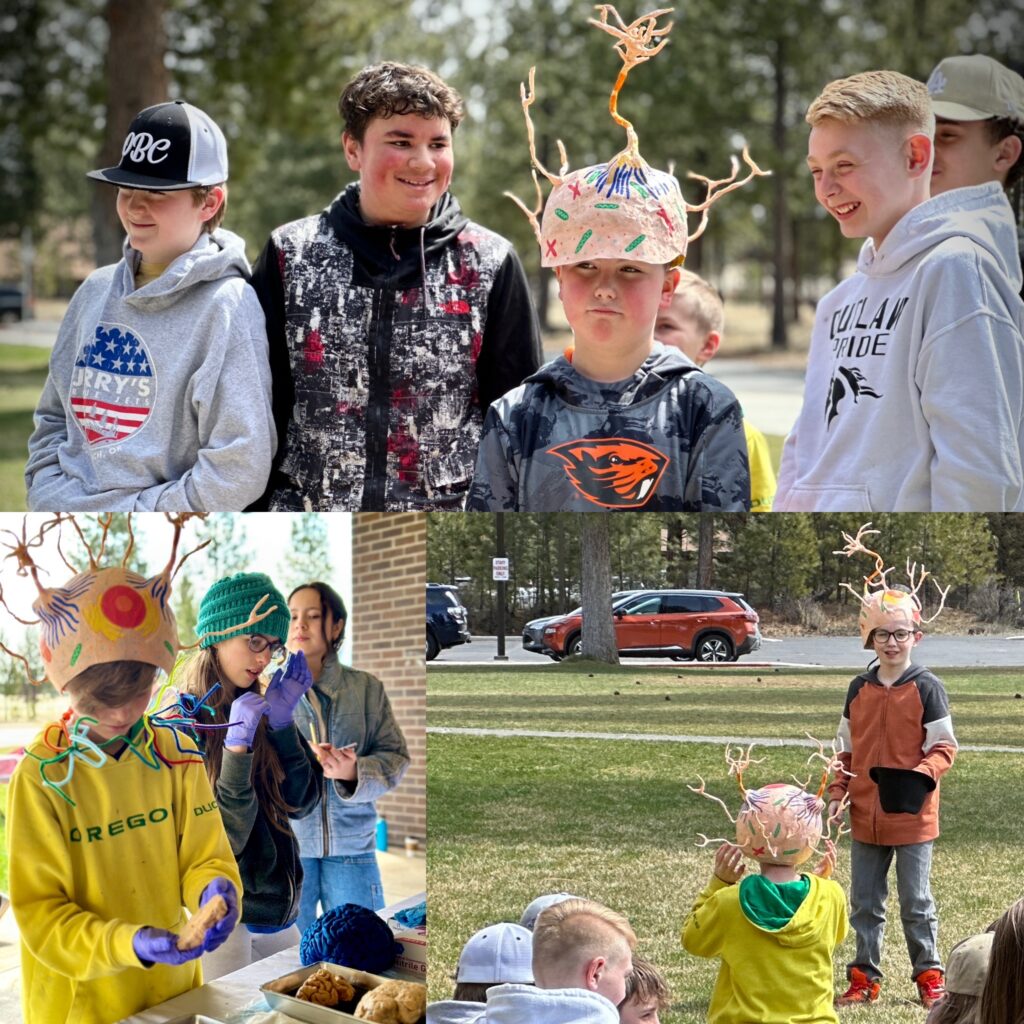
LEARN MORE: Papier-Mâché: Shaping Our Brain
We were welcomed by Principal Tim Roth and Science Teacher Tanya Young, and were so excited to be there! We’d scheduled an earlier visit last spring that was suddenly canceled by an unexpected lockdown after someone called in a false bomb threat.
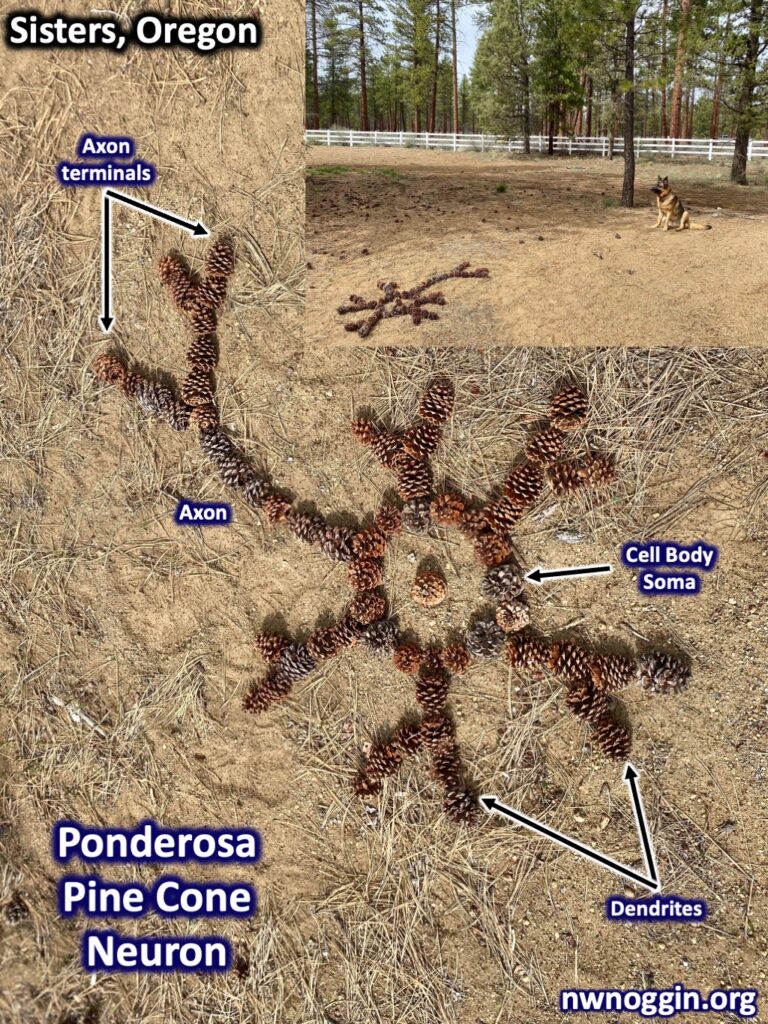
LEARN MORE: The Problem of Bomb Threats in Schools
LEARN MORE: School Bomb Threats and School Security
LEARN MORE: Those fake active shooter calls to schools? A similar thing happened before
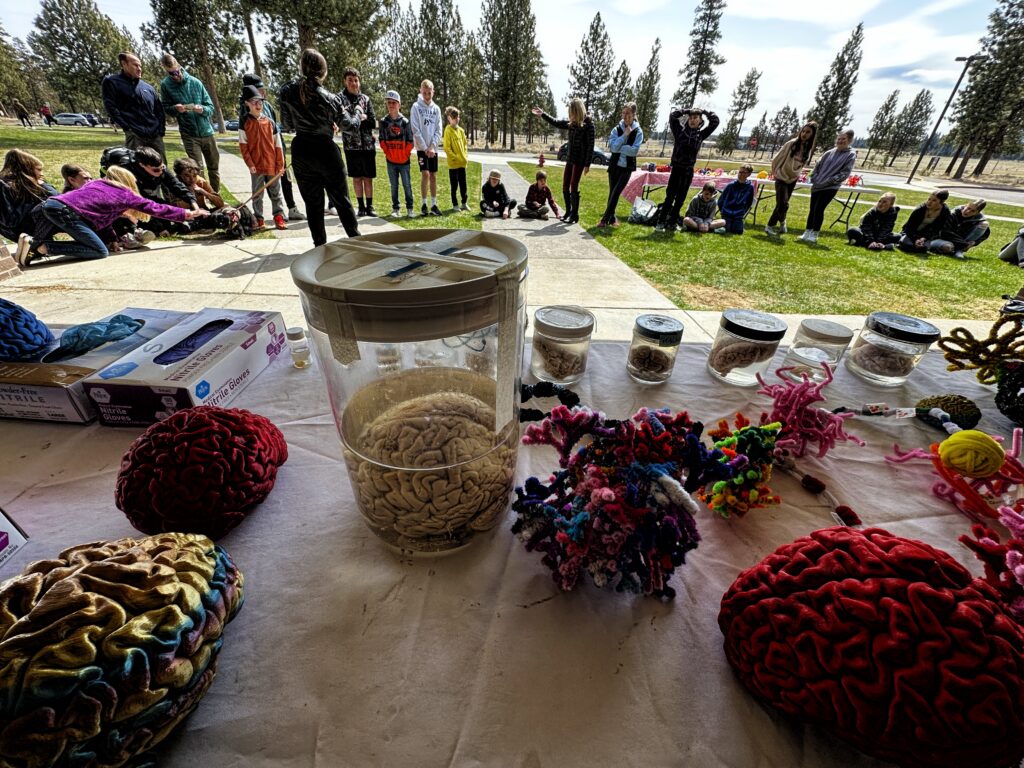
This time it felt pretty glorious to set up noggins on outdoor tables, without drizzle in the central Oregon sunshine, with stunning views of three volcanic Sisters across the street!

LEARN MORE: Geology and History Summary for Three Sisters
Brains, Questions and Art
After introductions we heard from some inquisitive 6th graders – who had a LOT to say! Our discussions touched on sleep, brain injuries, pig, canine and dinosaur noggins, and even the perceptual experience of time!
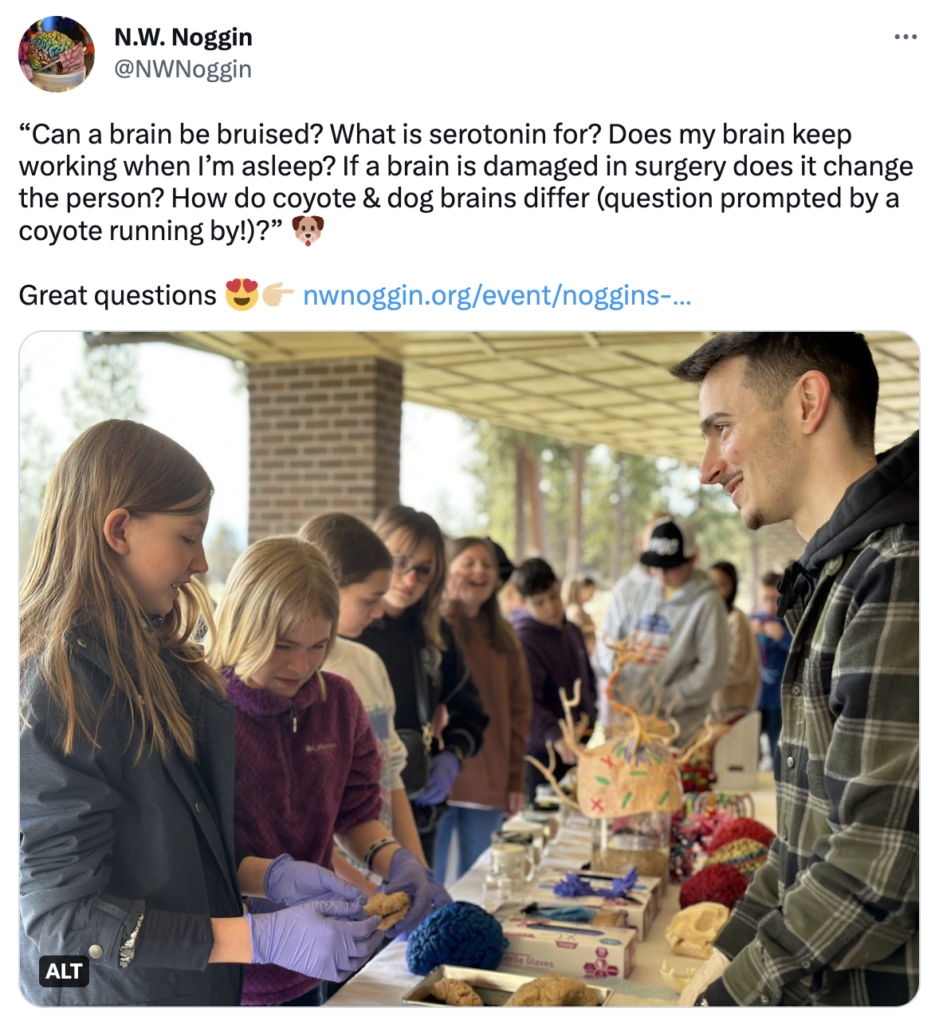
LEARN MORE: Let Kids Sleep!
LEARN MORE: Brain Basics: Understanding Sleep
LEARN MORE: The Neuroprotective Aspects of Sleep
LEARN MORE: Serotonin Involvement in Physiological Function and Behavior
LEARN MORE: In what sense are dogs special? Canine cognition in comparative context
LEARN MORE: Digital Endocasting in Comparative Canine Brain Morphology
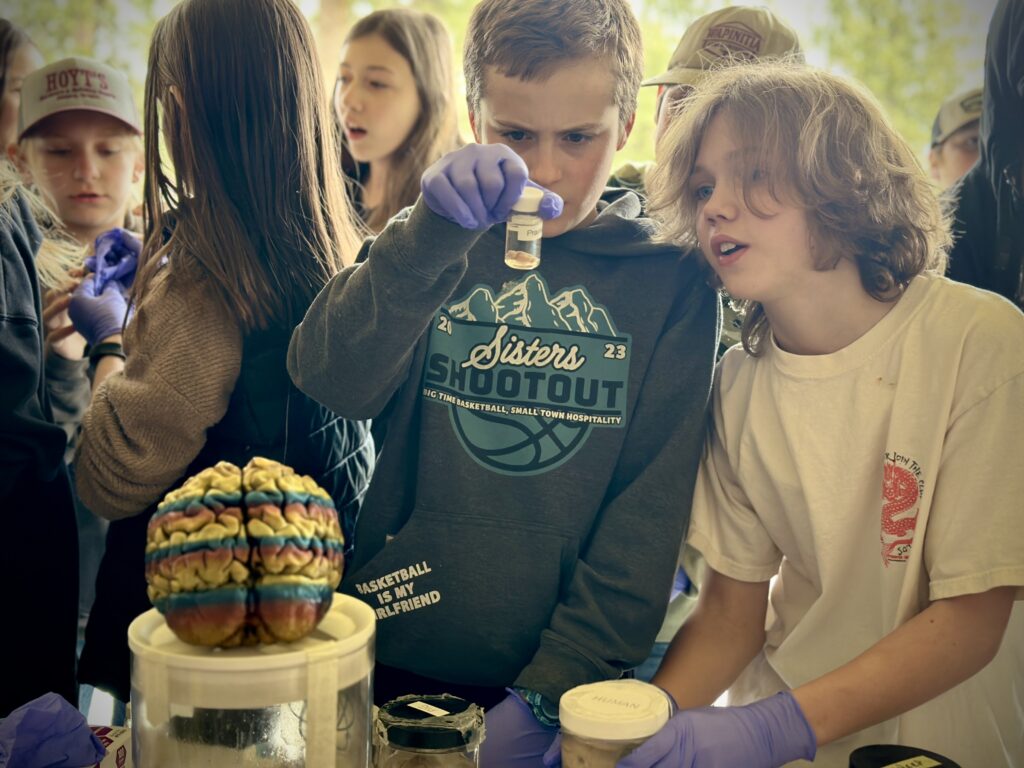
Protect your brain
Brains can certainly get bruised. A traumatic head injury can scrape your scalp, and damage your skull, and even cause bleeding above the brain (this is known as a subdural hematoma). But injury to the brain itself is possible too.
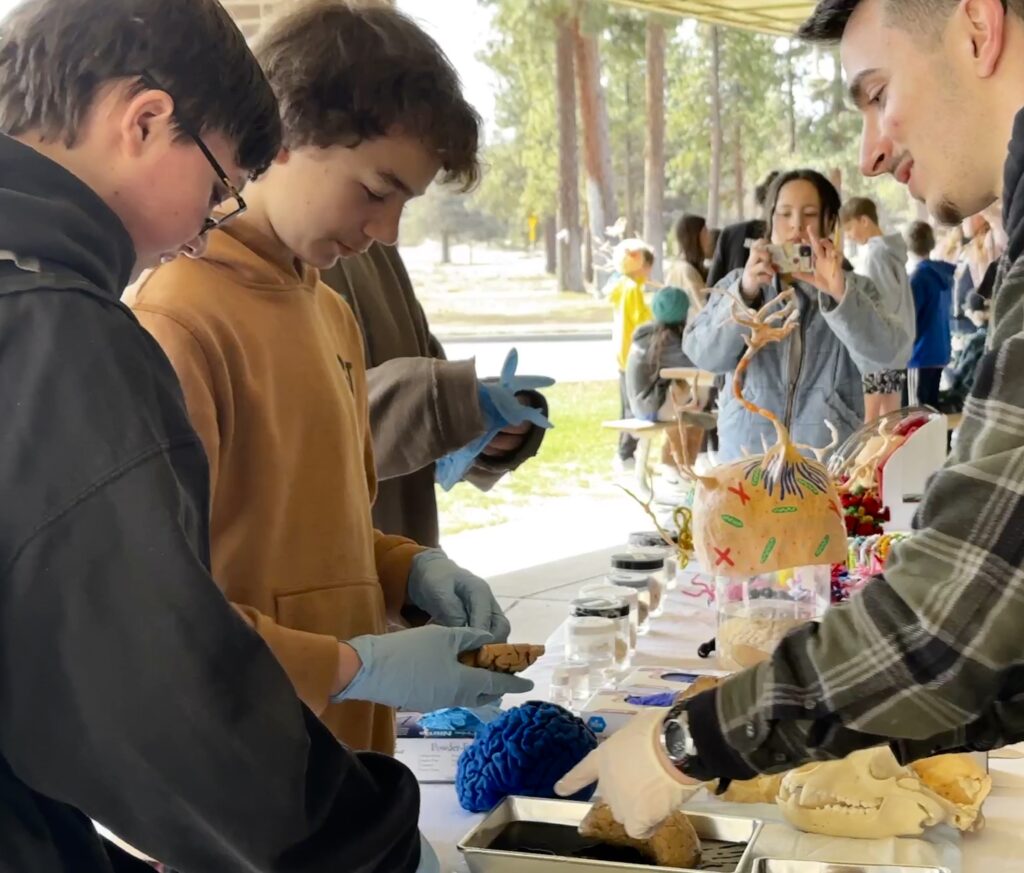
When the brain is bruised it’s called a contusion, which usually involves both bleeding (intracerebral hemorrhage) and swelling in the brain near where the head was hit.
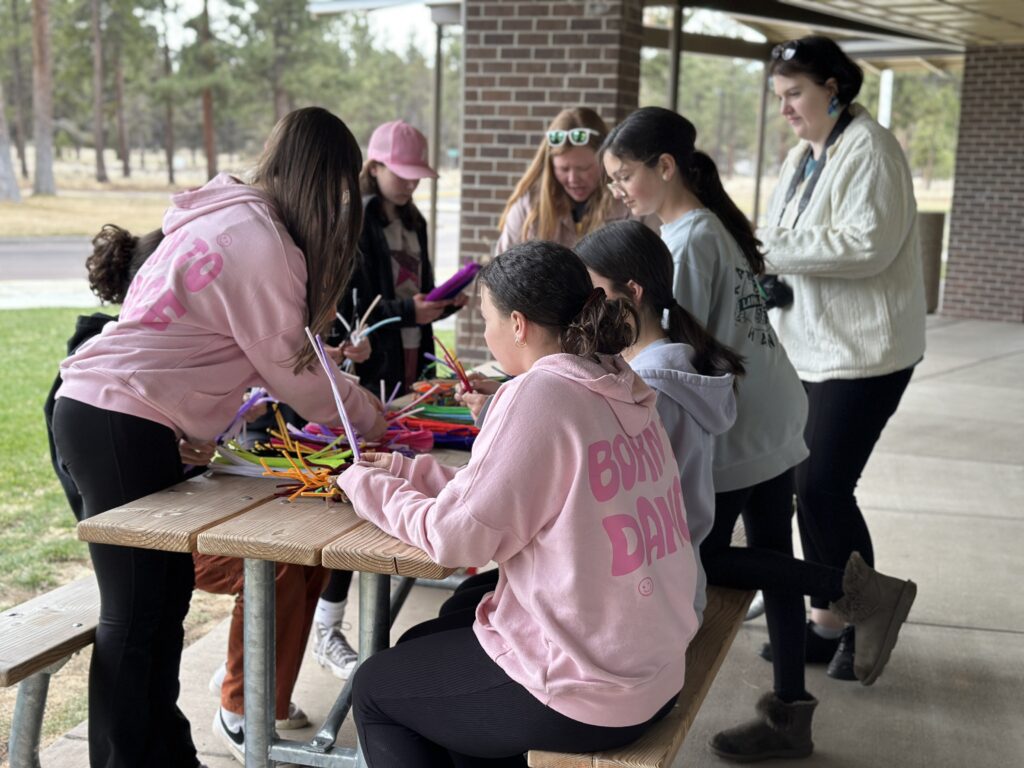
The initial bleeding and inflammation can thankfully resolve somewhat with time, and our brains have remarkable plasticity and capacity for recovery. But a contusion can be serious, and depending on the severity of the injury, people may require significant care and support.
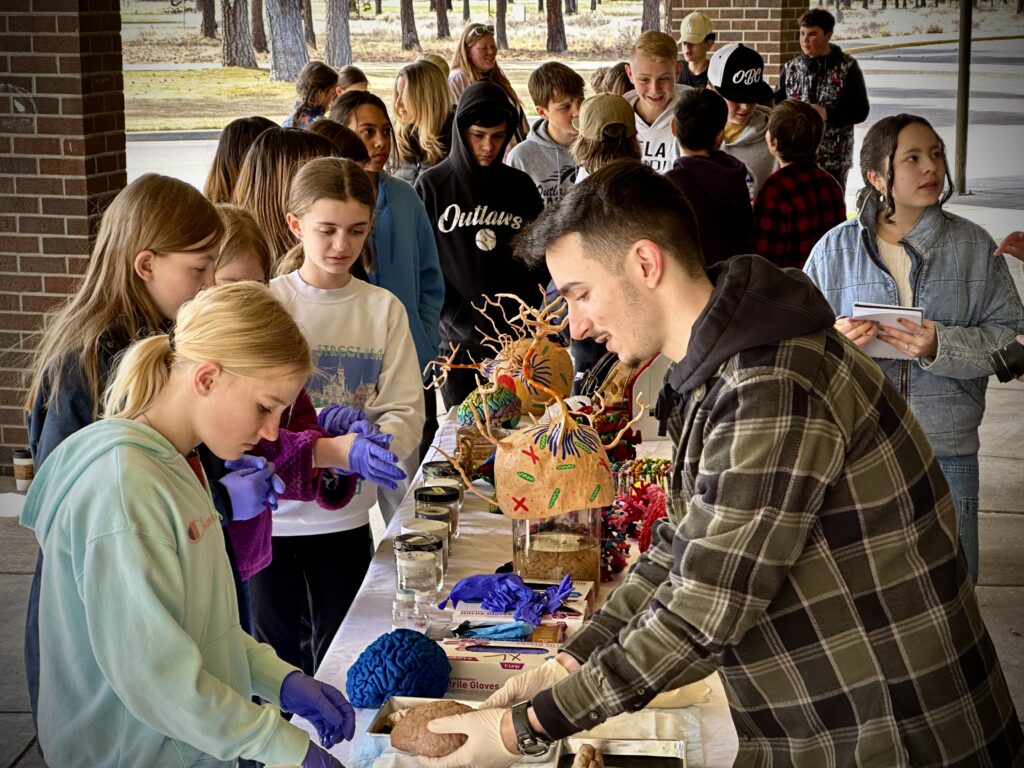
LEARN MORE: Cerebral Contusion
LEARN MORE: Contusion Progression Following Traumatic Brain Injury
LEARN MORE: Traumatic Brain Injury (TBI)
LEARN MORE: Neuroplasticity after Traumatic Brain Injury
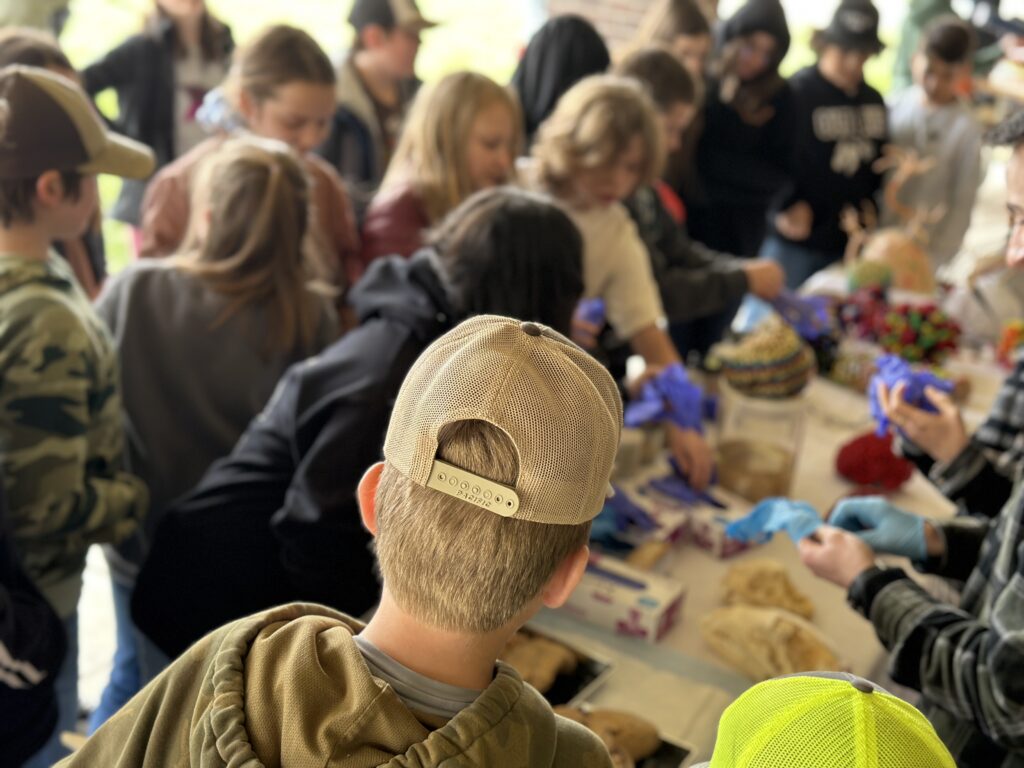

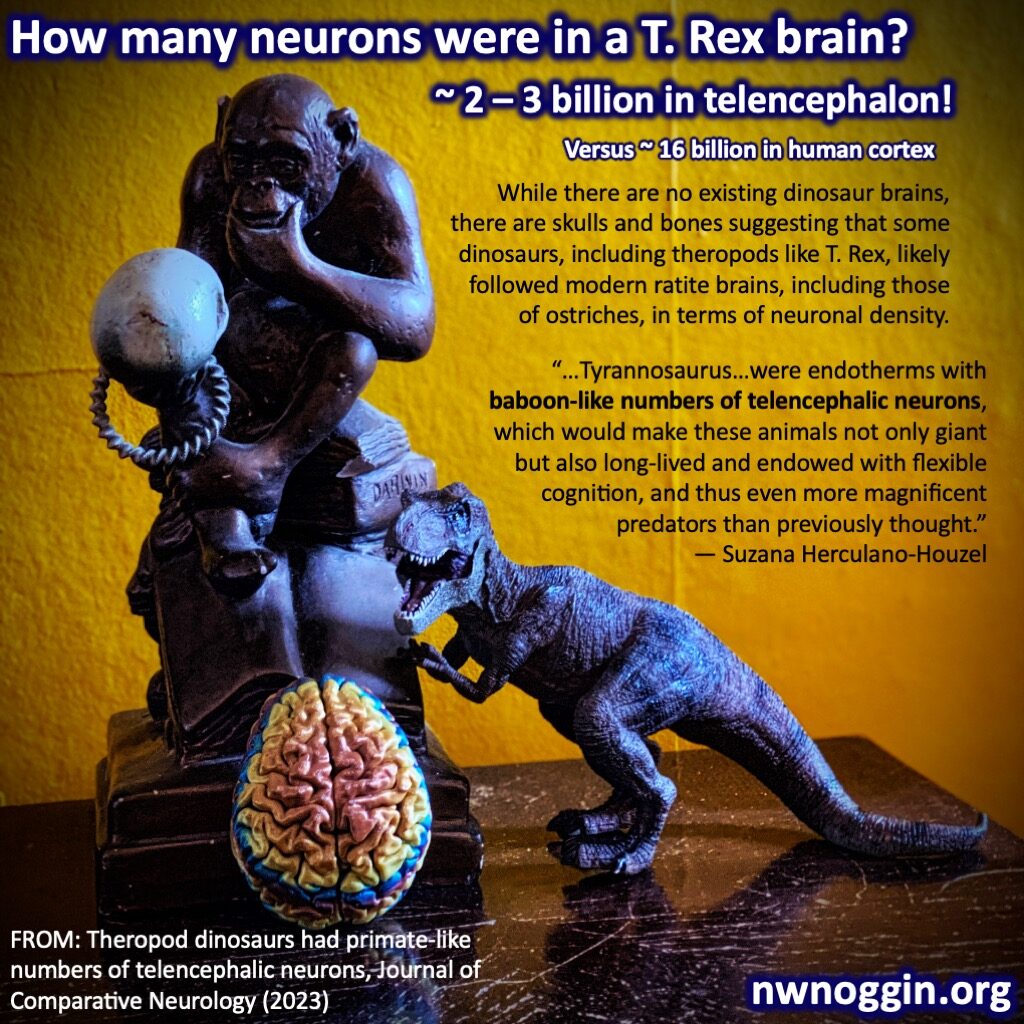
LEARN MORE: How many neurons in a dinosaur brain?
LEARN MORE: Assessing the Quality of Long-Term Stored Tissues
“The…pig brain resembles the human brain more in anatomy, growth, and development than the brains of commonly used small laboratory animals such as rodents.”
— Gregory Simchick, et al
LEARN MORE: Pig Brains Have Homologous Resting-State Networks with Human Brains
LEARN MORE: The use of pigs in neuroscience: modeling brain disorders
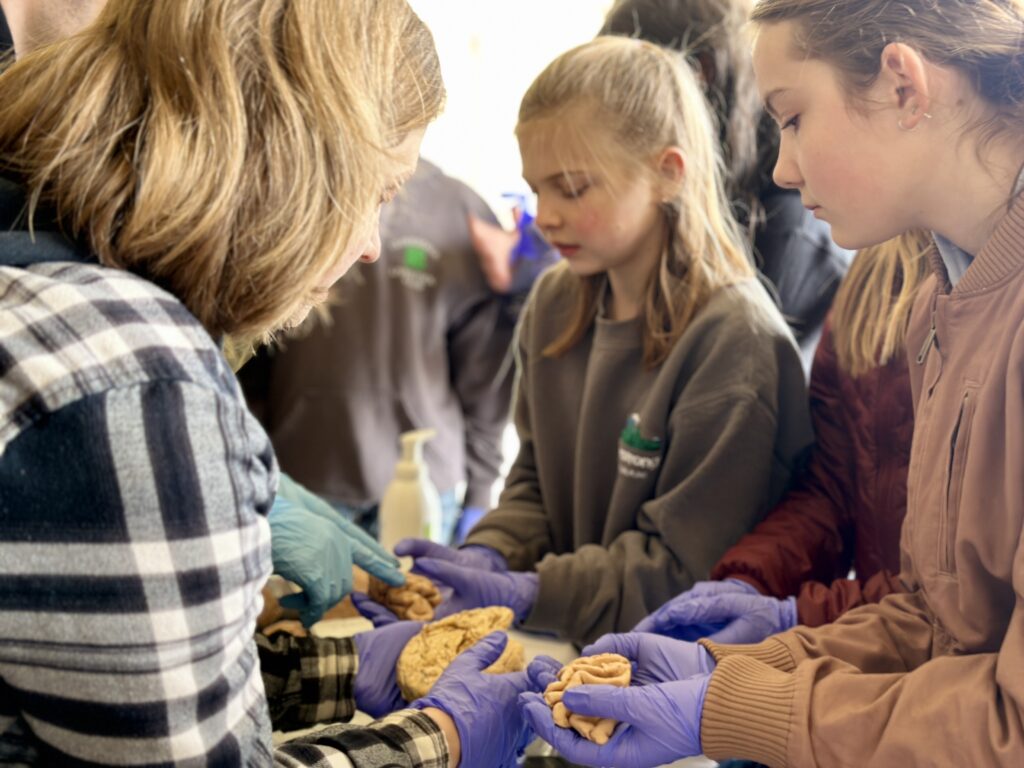
What is Time?
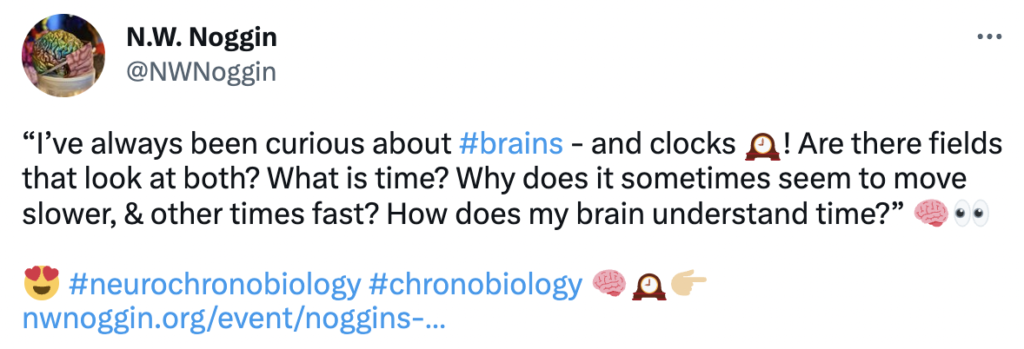
We are so often inspired (and occasionally blown away!!) by these questions.
“We inhabit time as fish live in water.”
— Carlo Rovelli
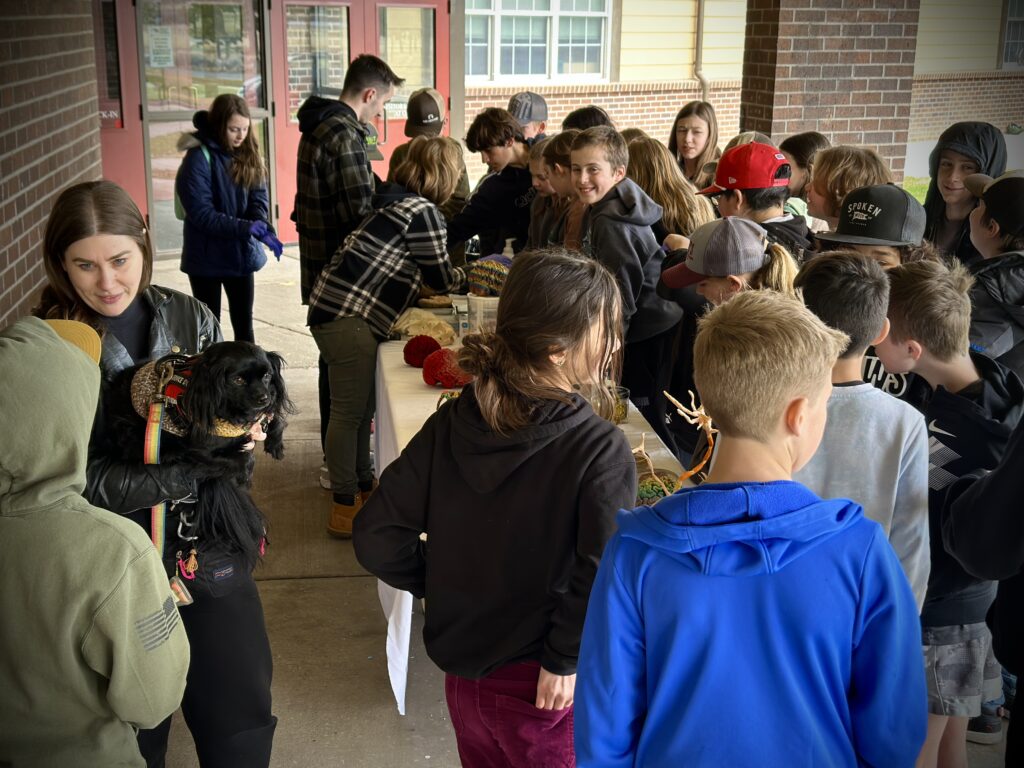
Time is a fascinating and compelling concept, and physicists still wrestle with its architecture (and whether it even exists)! A clock moves at one speed in Sisters, for example, while a clock placed much higher on a Cascade peak ticks faster!
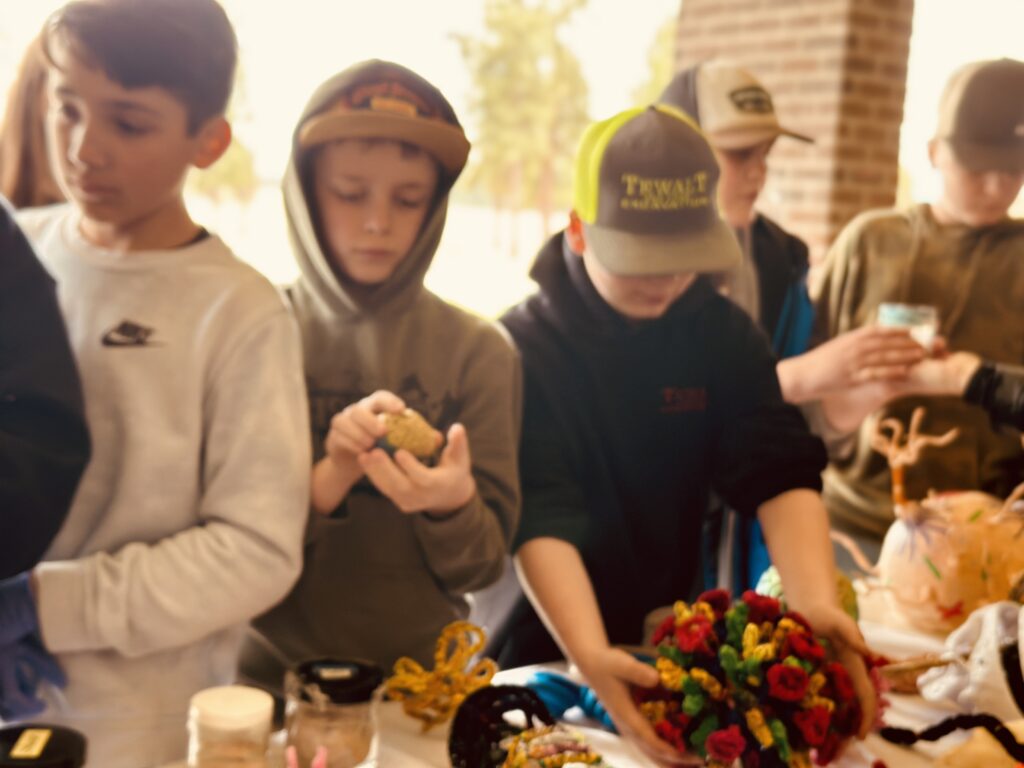
“If you have ever found yourself cursing a noisy upstairs neighbor, take solace in the fact that he or she is aging faster than you are.”
— John Matson
Time also slows down when we’re moving, as opposed to sitting still. A clock placed in your backpack as you bicycle through Sisters will tick just a tiny bit more slowly than one hanging motionless on the wall at the middle school.
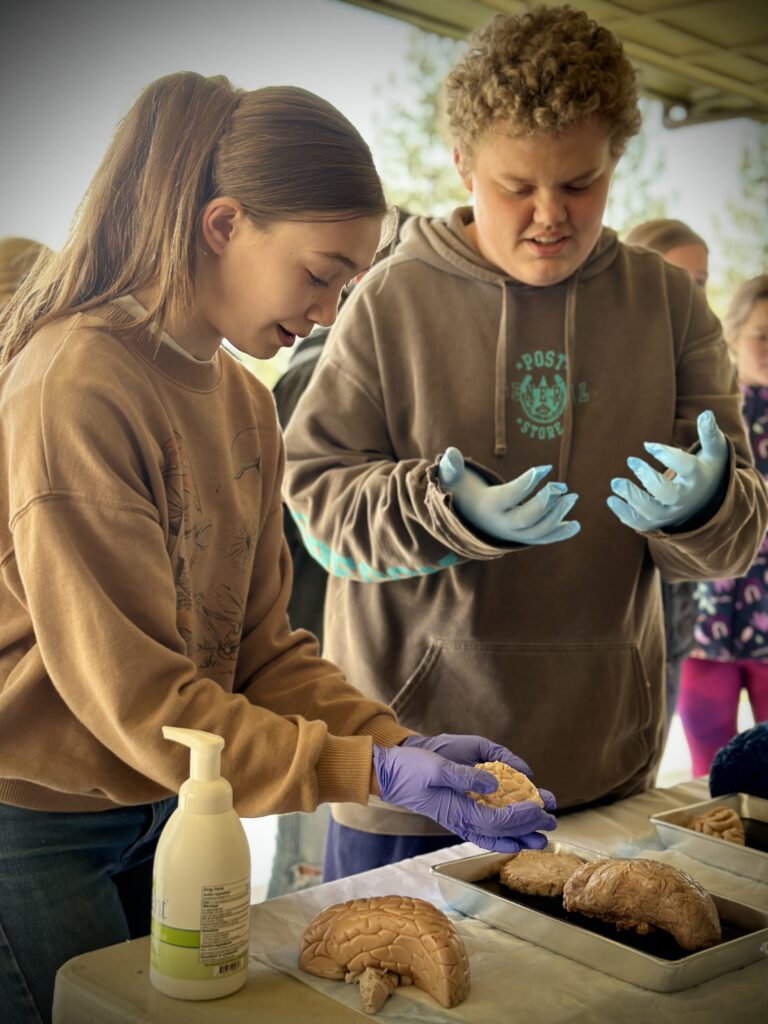
LEARN MORE: Ultraprecise Clock Rates Vary with Tiny Differences in Speed and Elevation
LEARN MORE: NIST Pair of Aluminum Atomic Clocks Reveal Einstein’s Relativity at a Personal Scale
LEARN MORE: The Matter of Time
EXCELLENT BOOK: The Order of Time
We typically perceive time as flowing in a particular direction, though often at different rates, depending on how we’re feeling, what’s happening and what we’re doing at that moment. And many complex interacting brain networks appear to be involved.

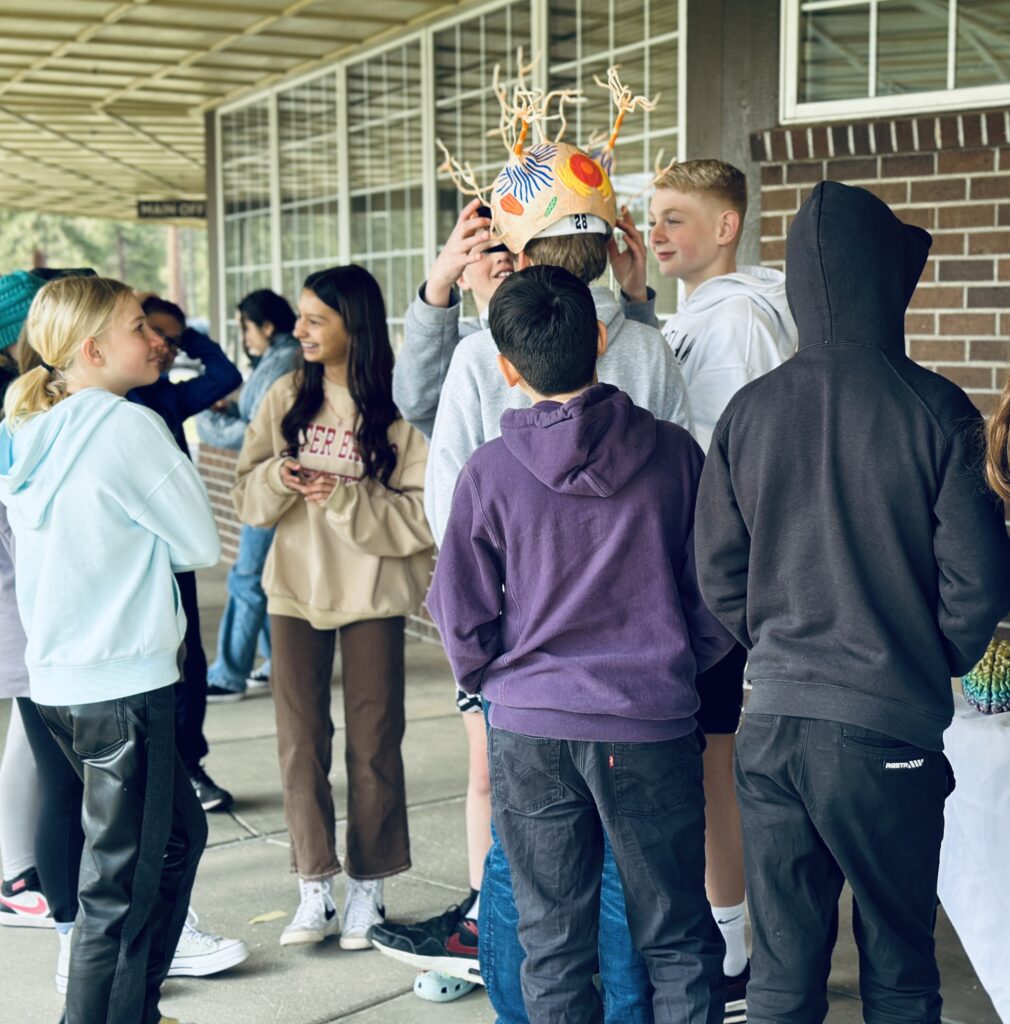
LEARN MORE: Neural networks engaged in milliseconds and seconds time processing
LEARN MORE: Understanding time perception through non-invasive brain stimulation techniques
LEARN MORE: Why does time seem to fly when we’re having fun?
LEARN MORE: Space and time in the brain
LEARN MORE: What are circadian rhythms?
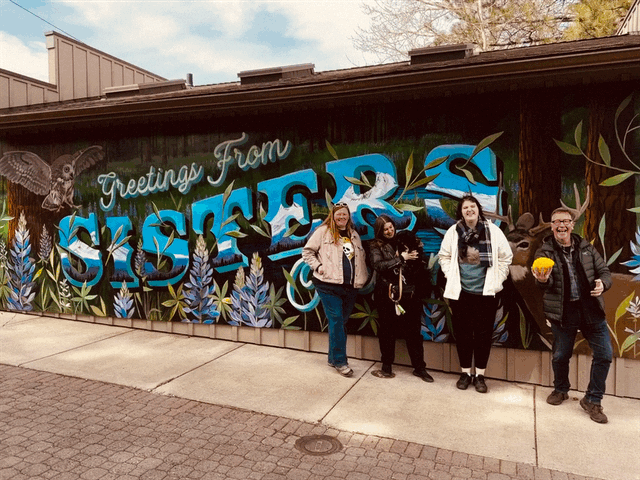
Huge thanks to students, teachers and staff at Sisters Middle School, as well as the Roundhouse Foundation and PSU for supporting our visit to central Oregon! And thanks as always to our exceptional outreach volunteers!
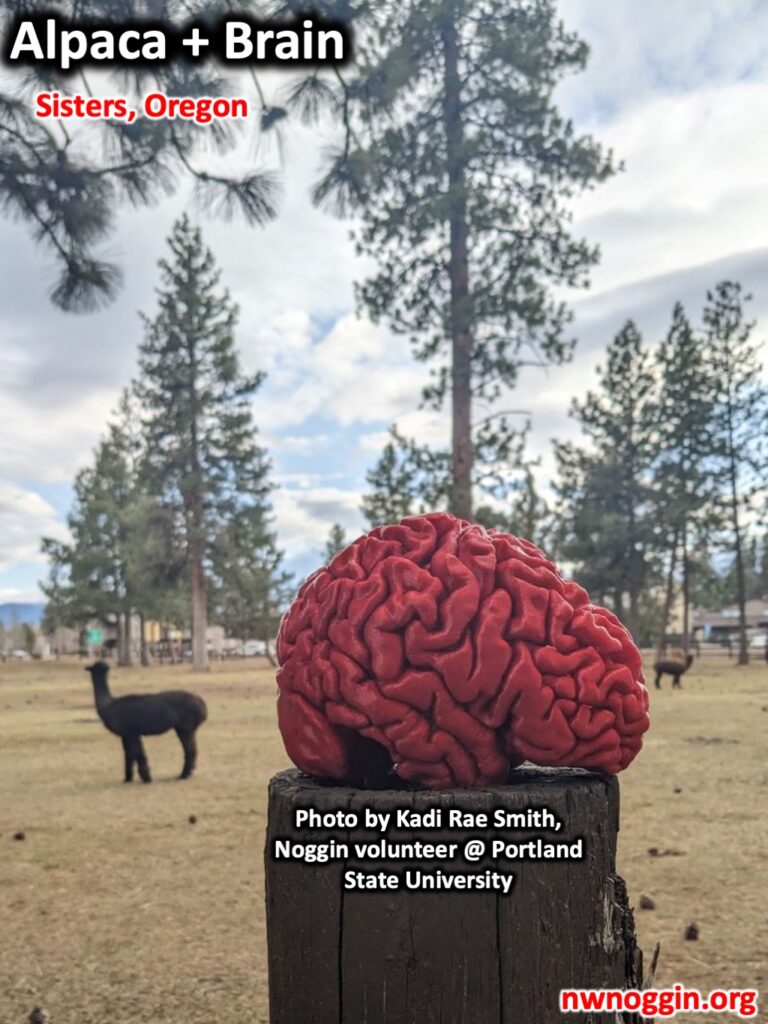
LEARN MORE: NW Noggin Brings Neuroscience Fun to Sisters Students


